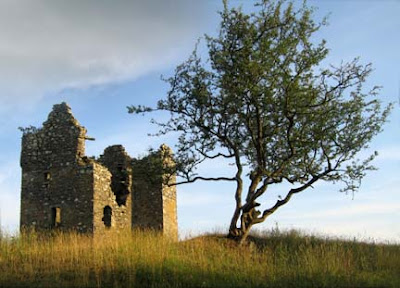When we talk about the ‘quality of light’, what exactly do we mean? Can you recognise good and bad quality light? Can you do anything to improve it? Well, it’s yes, to both questions. You can recognise it and you can often improve it.
When asked to define the quality of light, there are some photographers who go all precious and twitter that it’s the sort of thing that only ‘artistic’ people (like themselves presumably) can recognise. Well, as I’m only a simple soul I’ll try to be a bit more objective.
I think of the quality of light in terms of its softness or harshness. Its diffuseness or clarity. High quality light brings a luminescence to the shadows and reduces – but does not lose - contrasts between shadows and highlights. Once you know what to look for, you will be able to recognise high quality light when it’s there. The real bonus is that when you realise what’s going on, you may well be able to alter and enhance the quality of your light by using some very simple tricks.
 If you photograph someone out in the open on a sunny, cloudless day you’re going to get hard, sharply-outlined, empty black shadows. I’d call that poor quality light. The sun may be almost a million miles wide up there, but to a photographer it’s just a dot in the sky – a very small light source - and the smaller the light source, the harder and poorer the quality of the light it gives. Poor quality light has another extreme; if you take that same picture outdoors on a gloomy day with thick cloud cover, you are going to a get flat, uninteresting image with no contrast and no indication of the direction of the light source – poor quality light.
If you photograph someone out in the open on a sunny, cloudless day you’re going to get hard, sharply-outlined, empty black shadows. I’d call that poor quality light. The sun may be almost a million miles wide up there, but to a photographer it’s just a dot in the sky – a very small light source - and the smaller the light source, the harder and poorer the quality of the light it gives. Poor quality light has another extreme; if you take that same picture outdoors on a gloomy day with thick cloud cover, you are going to a get flat, uninteresting image with no contrast and no indication of the direction of the light source – poor quality light.
When asked to define the quality of light, there are some photographers who go all precious and twitter that it’s the sort of thing that only ‘artistic’ people (like themselves presumably) can recognise. Well, as I’m only a simple soul I’ll try to be a bit more objective.
I think of the quality of light in terms of its softness or harshness. Its diffuseness or clarity. High quality light brings a luminescence to the shadows and reduces – but does not lose - contrasts between shadows and highlights. Once you know what to look for, you will be able to recognise high quality light when it’s there. The real bonus is that when you realise what’s going on, you may well be able to alter and enhance the quality of your light by using some very simple tricks.
 If you photograph someone out in the open on a sunny, cloudless day you’re going to get hard, sharply-outlined, empty black shadows. I’d call that poor quality light. The sun may be almost a million miles wide up there, but to a photographer it’s just a dot in the sky – a very small light source - and the smaller the light source, the harder and poorer the quality of the light it gives. Poor quality light has another extreme; if you take that same picture outdoors on a gloomy day with thick cloud cover, you are going to a get flat, uninteresting image with no contrast and no indication of the direction of the light source – poor quality light.
If you photograph someone out in the open on a sunny, cloudless day you’re going to get hard, sharply-outlined, empty black shadows. I’d call that poor quality light. The sun may be almost a million miles wide up there, but to a photographer it’s just a dot in the sky – a very small light source - and the smaller the light source, the harder and poorer the quality of the light it gives. Poor quality light has another extreme; if you take that same picture outdoors on a gloomy day with thick cloud cover, you are going to a get flat, uninteresting image with no contrast and no indication of the direction of the light source – poor quality light.Different parts of the world can to produce their own particular light qualities. Mostly this is due to local atmospheric conditions. It is one reason why travel pictures from different regions can vary so much. Quite apart from the subject matter, there is no mistaking the dusty, smoky light of an Egyptian slum (top photograph) with the sparkling clarity of the light in the Galloway countryside with its pastel blue skies (lower photograph).
This is an important factor to bear in mind when trying to capture the ‘feel’ of a particular place or subject. The sharp angles of a modern building might suit the striking qualities of bright, hard sunlight, but a portrait of a child or an attractive woman will almost certainly be better photographed in much softer, higher quality, light.
Next, in part 2, we’ll look at the light between these two extremes – high quality light.
Next, in part 2, we’ll look at the light between these two extremes – high quality light.
In part 3, I’ll show you how you can sometimes change the quality of light.



1 comment:
Very interesting. And I always thought a sunny cloudless day produced good light.
A new daily visit for me.
Post a Comment